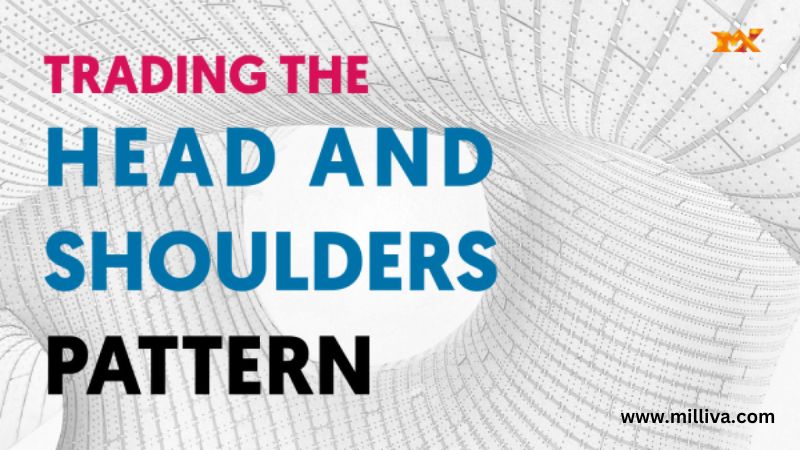How to Trade the Head and Shoulders Pattern

![]()
While trading head and shoulder patterns you should consider a whole range of factors, including the placement of stops, entry levels, and targets. This head and shoulders chart pattern is used by experienced traders to speculate both Forex and stock markets. The benefit of these patterns is to define areas to set risk levels and profit targets. In contrast, the head and shoulders pattern is equally useful in any trader’s arsenal and adopts the same approach as the traditional formation. Further, in this blog, let’s have a thorough look at how to trade the head and shoulders pattern.
What is the Head and Shoulders Pattern?
The head and shoulders pattern is a technical formation that shows a trend reversal is underway. It is an extremely useful pattern for traders, whether they are trend trading and want to be alert of potential risks or they want to catch a trend reversal near the turning point. Head and shoulders patterns can be employ to highlight price action within a wide range of markets, including Forex trading.
This head and shoulders pattern is the most popular pattern. Which is mostly used to find market reversals. In traditional head and shoulders formation, the pattern is raised through the failure to make a new higher high, followed by the break below the prior swing low. The contrast is true for an inverse head and shoulders. By using swing lows and swing highs, you can determine market direction, and also lets you understand more complex head and shoulders formations.
This head and shoulders chart pattern is a price reversal pattern that helps you to identify when a reversal may be underway after a trend has exhausted itself.
Head and Shoulders Formation
When the head and shoulders pattern occurs within an uptrend, the pattern starts with the rising price and back pulling, forming the left shoulder. The price rallies again, creating a higher peak, which is known as the peak of the head. Again the price moves lower and then rallies into a lower peak forms the right shoulder.
Swing lows are the price drops following the left shoulder and the head. A neckline will be form by connecting the swing lows to a trendline, extended off to the right. When the price falls below the neckline, the pattern is consider complete and the price is likely to continue moving lower.

Inverse Head and Shoulders Pattern
Simply, in downtrends, an inverse head and shoulders pattern occurs. The price is dropping and then has a temporary rally, forming the left shoulder. Before having another temporary rally, the price drops to a new low. The head is form by this. The price drops but is not capable to make a new low before rallying again. This forms the right shoulder.
The swing highs following the left head and shoulder are connect with a trendline to form the neckline. The price will keep moving higher when the price breaks the neckline and moves above it. In trading charts, you can see head and shoulders patterns, whether these be candlestick or other charts, using different drawing tools to identify support and resistance levels and trend lines.
Head and Shoulders Trading Strategy
When the price breaks the neckline, the entry opportunity on a head and shoulders pattern occurs. When identifying points of entry and exit on a price chart, you should make sure that you have a sufficient risk management strategy in place. Simply, the stop-loss order is typically place above the right shoulder for a topping pattern and is place below the right shoulder for a bottoming pattern.
For an expected profit or price target, you should measure the distance of the this from low to high and add it to the neckline breakout point for a bottoming pattern. Thus, you can subtract the height of the pattern from the neckline breakout point for a topping pattern. Both the distance and height are measure from the peak of the head to the lowest swing low within the topping pattern.
If one of the swing lows was extreme, you make use of a higher swing low to generate a smaller height and therefore a more conservative price target. In the bottom pattern, the height is the bottom of the head to the top of the highest swing high within the pattern. You can make use of the lower swing high if one of the swing highs was extreme, that will result in less height and again a more conservative profit target.
How Reliable is the Head and Shoulders Pattern?
The head and shoulders pattern can indicate the end of either an uptrend or a downtrend, but you should hold off taking any action until the price crosses through the neckline because this is when the price reversal is frequently verified. It is customary to measure the pattern’s width or height to determine an estimated profit objective, to place a stop loss there, and to use the neckline as an entry point (or possibly an exit signal).
Trading head and shoulders chart patterns have benefits and disadvantages, just like trading any sophisticated technical analysis pattern. Since the profit target is merely an estimate, the price may not only go considerably more than that, but also a lot further.
Some traders will choose to concentrate on patterns with specific traits. For instance, a smaller right shoulder compared to a larger right shoulder suggests a lesser stop loss. This enhances the trade’s risk-to-reward ratio because the stop loss is solely based on the considerably shorter distance between the neckline and the right shoulder, whereas the profit estimate is based on the pattern’s complete height. Looking for the same characteristics can move the odds more in a trader’s favour, over many traders. However, anything can happen in a single trade.
Final Thoughts
This may not be perfect for all, but it is worthwhile noting that these formations can differ significantly. Not all the head and shoulders formations are made equal, you should note while trading that the profitability can rely on that ratio between the shoulder and head size.

Visit us on: www.milliva.com





